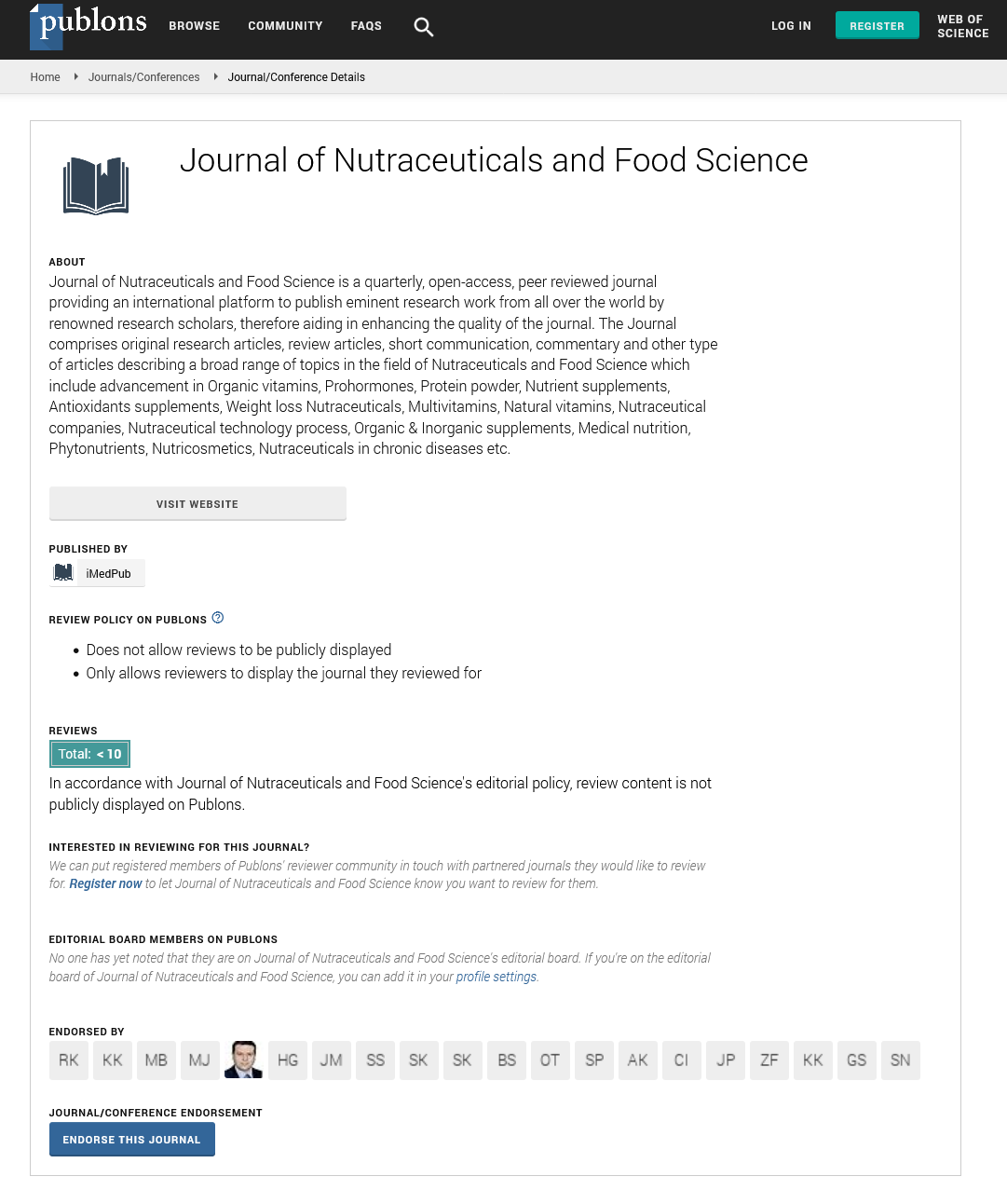Abstract
Announcement of World Congress on Food Science & Food Safety
The objective of this work was to investigate Nε-carboxymethyl-lysine (CML) and Nε-carboxyethyl-lysine (CEL) contents in commercial meat products. The results showed that sauced beef and Chinese smoked-cured sausage had the highest CML content (570.38 mg/kg protein) and lowest level of CML (42.18 mg/kg protein), respectively. The CEL level was the highest in stewed pork-hock in soy sauce (868.99 mg/kg protein), and lowest in Korean barbecue (37.95 mg/kg protein). Higher levels of CML and CEL were observed in meat products prepared with sucrose and sauce. Irradiation sterilization had a stronger promoting effect on CML and CEL formation, while smoking could lead to a decrease in CML and CEL. Formation pathway of CML and CEL might be different at different processing temperature due to the different trends of CML and CEL levels in commercial meat products. Furthermore, additions of spices, sodium nitrite and tomato juice in meat products had stronger inhibitory effects on CML and CEL formation. These data could provide a crucial guide for consumers to select meat products, and reduce CML and CEL intake. Apples are rich in phenolic antioxidants, which have various beneficial effects on human health. The purposes of our study were to evaluate the effects of Lactobacillus fermentum 21828 fermentation on the phytochemical composition and bioactivity of Aksu (Fuji) apple juice (AJ), and to evaluate the hypoglycemic effect of fermented AJ (FAJ) and its effect on intestinal flora. Fermentation altered the phytochemistry and enhanced the biological activity (hypoglycemic and antioxidant activities) of AJ. FAJ improved fasting blood glucose and insulin levels in diabetic mice, regulated blood lipid metabolism, reduced oxidative damage, restored damaged islet cells, and reshaped the intestinal flora of diabetic mice by increasing the relative abundance of Actinobacteria, Bifidobacteria, and Faecalibaculum. The results indicate that FAJ is a fermented product that is rich in bioactive components and has potential hypoglycemic and antioxidant activities.
Distance education courses have become popular due to the increased number of commuter students as well as people already in the workforce who need further education for advancement within their careers. A graduate-level Web-based course entitled Special Topics—Poultry Food Safety Microbiology was developed from an existing senior undergraduate advanced food microbiology course in the Poultry Science Department at Texas A&M University. Conversion of standard lecture material into a distance education course can provide unique challenges to maintain comparable course content in an asynchronous manner The overall objective for this course was to examine bacterial activities including ecology in food, animals, raw and processed meat, eggs, and human pathogenesis. Students were surveyed at the end of the class and the majority agreed that they would be willing to take the course as an online course, although they were not willing to pay an extra fee for an online course. The majority of students used the online version of the course as a supplement to the classroom rather than as a substitute. The European chapter of the International Society for Exposure Science (ISES Europe) provides a vision on how dietary exposure sciences can contribute to address the challenges in the field of food safety and nutrition due to changes in food systems
Author(s):
Amin Mousavi
Abstract | PDF
Share this

Google scholar citation report
Citations : 393
Journal of Nutraceuticals and Food Science received 393 citations as per google scholar report
Journal of Nutraceuticals and Food Science peer review process verified at publons
Abstracted/Indexed in
- Google Scholar
- Publons
- Secret Search Engine Labs
Open Access Journals
- Aquaculture & Veterinary Science
- Chemistry & Chemical Sciences
- Clinical Sciences
- Engineering
- General Science
- Genetics & Molecular Biology
- Health Care & Nursing
- Immunology & Microbiology
- Materials Science
- Mathematics & Physics
- Medical Sciences
- Neurology & Psychiatry
- Oncology & Cancer Science
- Pharmaceutical Sciences


